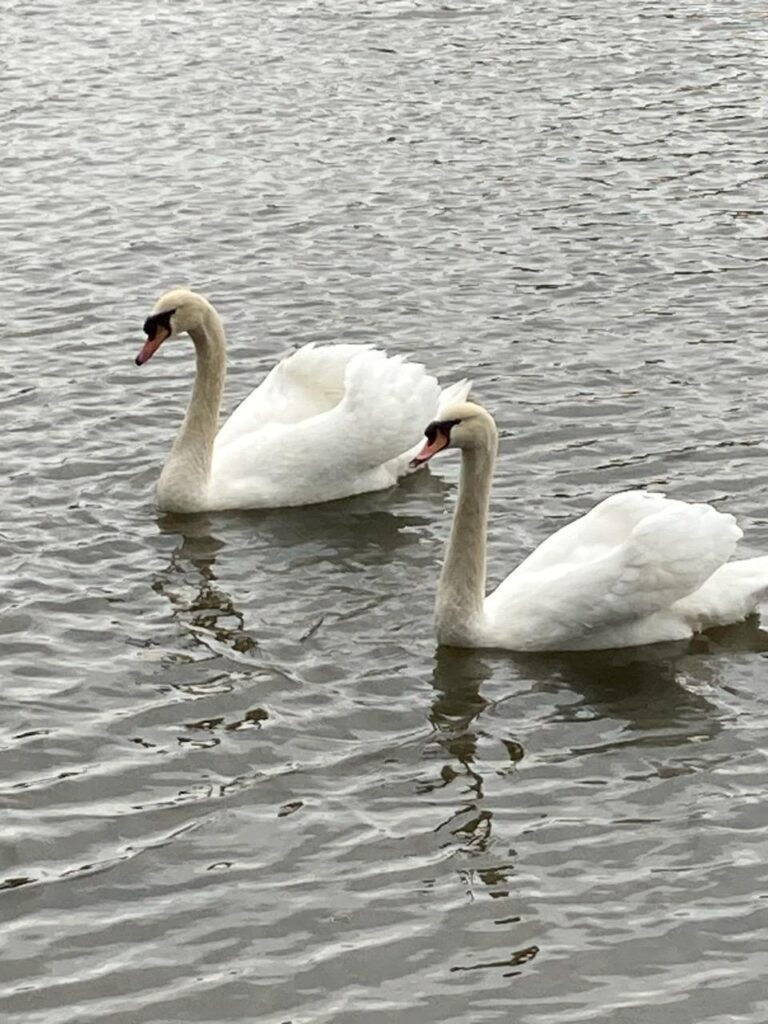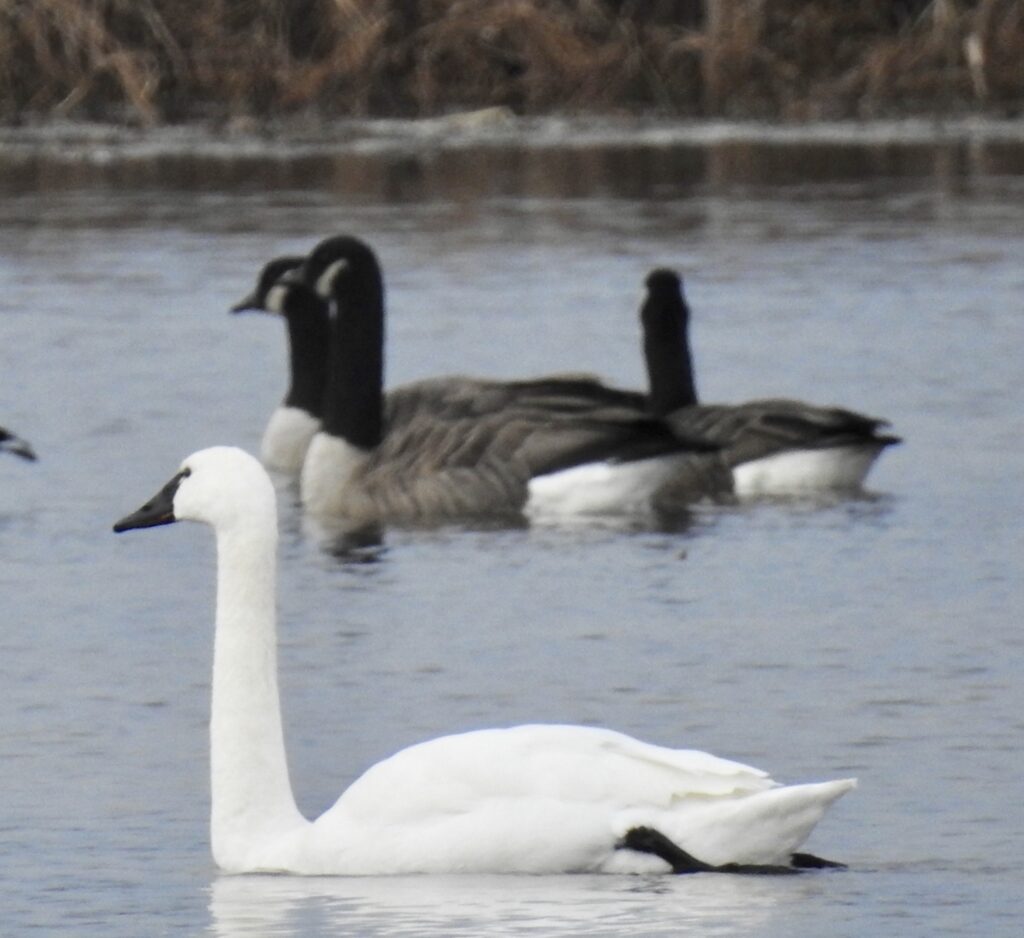
By Mary Reid Barrow
These two beautiful mute swans, with graceful, curved necks and ruffled wing feathers, were swimming placidly at the end of Five Point Road in the Lynnhaven River when Ellen Deppe snapped their photo.
“I’m guessing they were just passing through, looking beautiful,” said Ellen’s husband, Jim Deppe, LRNow’s Advocacy Coordinator, who sent the photo.
When I saw the beauties, I couldn’t help but think of the blog I wrote last week about lesser celandine, a plant gracing our area in beautiful bloom right now. The dirty truth is lesser celandine is an invasive Asian species and so are the mute swans that were imported from Europe and Asia.
Mute swans and lesser celandine are two of those species that, on the surface, have everything going for them. Both were brought to this country by us, humans, because we found them charming. The trouble is, beauty is only skin deep.
Lesser celandine will grow rampant in state parks and in your garden, choking out other spring bloomers. And mute swans, the largest waterfowl in the United States, gobble up the underwater grasses that our native species depend on. The mud-stained necks on the swans in the photo are evidence of good grass meals scoured from our river bottom.
Mute Swans were imported to this country to grace estates, parks, and resort ponds. The swans that now live wild year-round in the Chesapeake Bay area, are said to have escaped from a Maryland estate back in the early 1960s. Similarly to how lesser celandine is confused with the rare-in-this-area native marsh marigold, mute swans are sometimes confused with our winter residents, the handsome tundra swan.

While mute swans swim with a graceful curved neck, tundra swans are apt to swim proudly with erect necks. Tundras have black beaks and elegant sleek feathers. Mutes have orange beaks and those ruffled wing feathers that look a little like a ballet tutu. Think, “Swan Lake.”
The word, “mute”, describes their silence compared to the tundra’s wonderful, bugling call that you hear as the birds fly overhead or communicate on the water. Mutes only occasionally make a bark or a hiss, which you might have heard from a male had you gotten too close in mating season!
Unlike tundra swans that often fly in flocks, mute swans are apt to fly alone or in pairs.
Weighing up to 25 pounds with a huge wing span of up to 8 feet, mute swans truly are the largest species of duck or geese we see in the Bay area. Since they dine on the same underwater grasses that our native waterfowl do and have reproduced enough to be a threat to their food sources, mute swans are no longer welcome in the state by the Virginia Department of Wildlife Resources.
As we said, pretty is as pretty does.
LRNow would love to hear your nature news. Whether it’s about unusual plants or critters you see on your walks or find on the beach, or tales of good folks who care for the environment, let maryreid@lrnow.org.